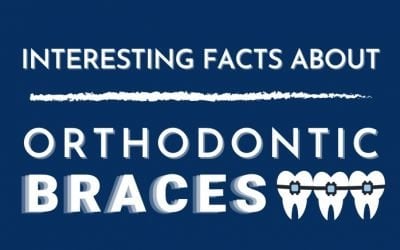Understanding Orthodontic Technology in a Fast-Changing Environment

As more people search for ways to get the smile they’ve always dreamed of, there are now more and more practitioners offering teeth-straightening services without undergoing specialist training. While these practitioners may have attended weekend courses and claim to provide ‘orthodontic services’, consumers need to be aware that they may not be formally registered, specialist orthodontists. Only specialist orthodontists are fully qualified and recognised by the Australian Health Practitioners Regulation Agency (AHPRA) to straighten teeth and align jaws.
An Ongoing Education
Orthodontists have undertaken an additional 3 years of specialist training – over and above their general dental degree. When they’re not seeing orthodontic patients, they’re learning more about the field, ensuring they are across the latest technology available to patients.
This includes attending conferences and education sessions, as well as reading the latest research into technological advancements. Most importantly, orthodontists can apply their expert knowledge to this information to uncover false claims and ensure they’re offering the best and safest options for their patients.
Why Doesn’t My Local Orthodontist Offer Shorter Treatments?
To help teeth transition to their new position and correct bad bites safely, orthodontic treatment needs to be gradual. Placing too much pressure on teeth can weaken their placement and cause damage to the roots and gums. This is the reason why most orthodontic treatment plans can take between 18 months to 2 years. If something is worth doing, it is definitely worth doing properly!
In many cases, quick treatments are, in fact, identical to the initial stage of regular orthodontic treatments. The only difference is that rather than the patient completing a full course of regular orthodontic treatment (i.e. where jaws and all teeth are properly aligned), a quick treatment generally does not extend beyond the early cosmetic stage. This means that while the front teeth will appear straight, any underlying bite issues will often be left uncorrected.
Only a specialist orthodontist has the training, knowledge and clinical expertise to distinguish which types of patients can be safely finished faster than the average timeframe and which patients require comprehensive management.
Have Metal Braces Changed?
Absolutely! We might call them traditional metal braces, but the reality is that they have evolved a lot since they first came into use in the orthodontic world. They’re not the same braces as you might remember from your own childhood. These days they’re smaller and subtler but more effective. With each helpful technological advancement in the field of orthodontics, you can rest assured that your orthodontist is across these developments and knows how to implement the necessary changes in their orthodontic practice.
Does That Mean That Metal Braces Are The Only Option for My Family?
There are reasons why metal braces are the most common form of orthodontic treatment you’ll see. They’re one of the most cost-effective options, they’re able to perform the full range of complex tooth movements, and their results have been proven to be both safe and predictable.
However, metal braces are not the only option. Ceramic “clear” braces, lingual braces or even clear aligner treatments like Invisalign® can be just as effective in achieving an optimal result.
Your orthodontist will help you select the best type of treatment for you or your child.
How Can I Find Out More?
Whether you have unanswered questions about the different types of treatments, want more information about your options or want some expert advice to ensure you’re making the best choice for your family, your specialist orthodontist is there to help.
Search the Australian Society of Orthodontists (ASO) database to find a specialist orthodontist in your area who can assess your case in more detail.
Click here to read the original article.
DISCLAIMER:
The content has been made available for informational and educational purposes only. Central Coast Orthodontics does not make any representation or warranties with respect to the accuracy, applicability, fitness, or completeness of the content.
The content is not intended to be a substitute for professional personal diagnosis or treatment. Always seek the advice of your dentist or another qualified health provider with any questions you may have regarding a dental or medical condition. Never disregard professional advice or delay seeking it because of something you have read or seen on the Site.
Learn More About
Related Articles
Unfinished Smiles Welcome Here – We’ll Pick Up Where You Left Off
Is Smile Direct Club’s insolvency leaving your teeth realignment process stranded? As Invisalign Diamond Plus providers…
Interesting Facts About Orthodontic Braces
Wanting to get orthodontic braces but feeling unsure because you don't have knowledge about its...
Three Benefits of Invisalign
Did you know that aside from being an option for straightening your teeth, there are also benefits...
Metal Braces: Does This Traditional Dental Technology Have a Future?
Of all the medical professions, dentistry has always generated the most fear and continues to;...







